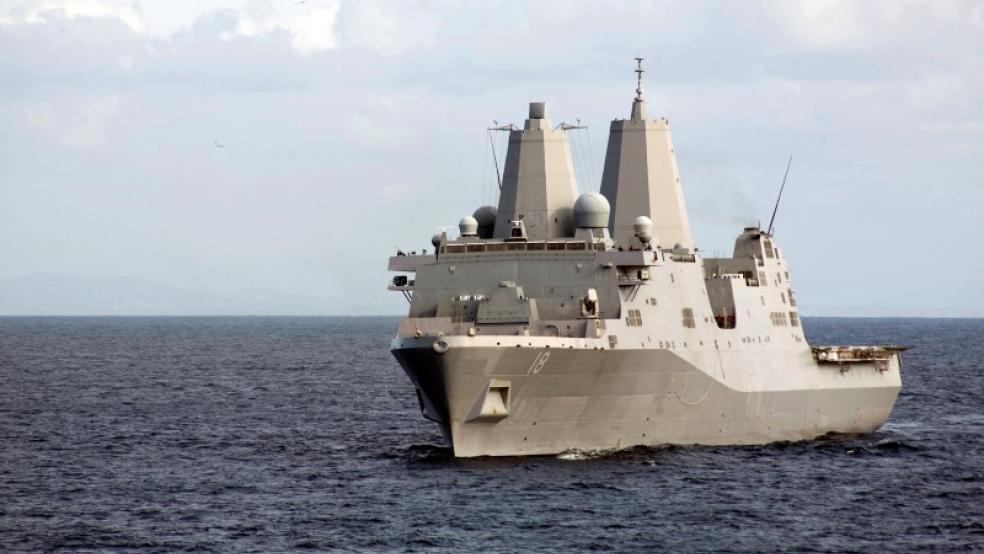The U.S. Navy’s swarm boats can identify a potential enemy vessel and execute more complex operations to defeat a wider variety of threats, the Office of Naval Research, or ONR, announced on Wednesday.
ONR first demonstrated the swarm boats in 2014, sending 13 robot boats out on Virginia’s James River to protect a large, high-value ship. The experiment proved that the robots could move independently of one another yet coordinate well enough to swarm a threatening vessel and escort it away from a friendly one. It was a key demonstration of ONR’s Control Architecture for Robotic Agent Command and Sensing, or CARACaS system, which includes radar and infrared sensors and which can be retrofitted to a variety of vessels. (ONR has been working mostly with small inflatable boats, but has tested it on four types of craft.) But a human had to tell the robots which vessel to swarm.
Related: Why Asia Is on the Brink of a New Arms Race
That has changed. A Sept. 6-Oct. 3 test in the lower Chesapeake Bay demonstrated several new capabilities that will “open up the aperture” for more missions, said ONR program manager Robert Brizzolara.
One was “enhanced vessel classification,” the boats’ ability to separate friend from foe, using images fed into CARACaS. No small task, this advance required new research and development into target classification.
“We looked at a relatively large number of automated target recognition approaches…taking algorithms for [automated target recognition] and using them in our maritime environment was not straightforward,” said Brizzolara. “In the end, we finally came up with an approach that works very well.”
But the boats can also evaluate potential threats based on their behaviors; for example, taking note of how close a suspect vessel is getting to a port, ship, or other asset. This capability, which was not demonstrated in the recent tests, allows new images and behaviors to be entered into the boats’ threat library.
Related: Trump Dumps on F-35 Contract and Calls for ‘Lifetime’ Ban on Revolving Door
The recent experiment did demonstrate new tactical actions that the robot boats can use to handle a rapidly changing situation. For instance, the swarm can now assign different drones to trail or track different enemy boats. In the 2014 demonstration, they were much less coordinated; one threatening vessel might attract the entire swarm, opening up an opportunity for another.
“The co-operative decision making is a high technical degree of difficulty, very challenging technical problem,” Brizzolara says in a video that ONR provided to media. You can watch the demonstration here:
The demonstration comes as naval tensions around the world are rising. After an Iranian vessel passed within 100 yards of a U.S. warship on Sept. 6, then-candidate Donald Trump threatened Iran, saying, “When they circle our beautiful destroyers with their little boats and they make gestures that our people — that they shouldn’t be allowed to make, they will be shot out of the water.”
Improved swarm technology would give operators another option.
“We do have confirmation that the Navy is very interested in the work we’re doing,” said ONR spokesman Robert Freeman.
This article originally appeared on DefenseOne. Read more from DefenseOne:
The CIA’s Classified Cloud Is Reducing Tasks from Months to Minutes




